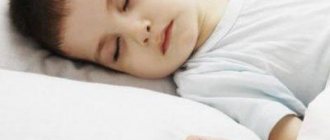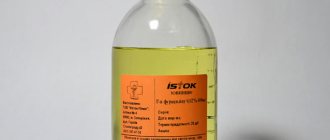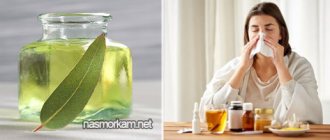One of the anatomical features of the tonsils is the presence of lacunae - a kind of natural depressions. They are the site of localization of purulent plugs, which mainly consist of thickened epithelium, “dead” neutrophilic leukocytes (pus) and deposits of calcium salts, due to which the plugs have a dense consistency.
Pus plugs are a favorable environment for the development and proliferation of bacteria. It is for this reason that rinsing the lacunae speeds up the treatment of chronic tonsillitis.
Hardware washing methods
The presence of purulent plugs in chronic tonsillitis is a direct indication for washing the tonsils (tonsils).
Sometimes plugs can form in healthy people who have never had tonsillitis. This is due to the anatomical and physiological characteristics of the lymphoid tissue, which is represented by the tonsils. In this case, rinsing is not required - non-inflamed tonsils have the property of self-cleaning.
ENT doctors have several ways to carry out this procedure.
Using a syringe
The method is simple and universal. The procedure does not require expensive and difficult-to-use equipment. The kit that the doctor will need includes a syringe, a curved cannula and a blunt atraumatic needle. Having filled the syringe with an antiseptic solution, the otorhinolaryngologist inserts a needle into the lacuna and, pressing the piston, washes out the contents of the tonsils under pressure:
| pros | Minuses |
| cheapness | small gaps are difficult to reach for the solution |
| ease of implementation of the technique | there is a need to use suction for pathological discharge |
| minimum contraindications | there is a small probability of microtraumas occurring on the mucous membrane |
| Possibility of use at home | home use of the technique may be of poor quality |
How it happens
Before washing, it is necessary to carry out a number of preparatory measures, and also know some recommendations that must be followed after treating tonsillitis plugs:
- The last meal should be one hour before the procedure.
- Do not tilt your heads back while cleaning.
- Don't breathe deeply.
- After the procedure, you should not eat or drink for about 2 hours. This time is necessary for the medicine to dissolve.
Vacuum cleaning is performed in a course of 8-10 procedures. During the first 2-3 procedures, only the tonsils are sounded. This is required so that the plugs of the lacunae expand and the accumulated pus is released. After this, scoring and phonoresis occurs. To get the maximum effect, children undergo a course of physical therapy in combination with this procedure. The second course can be carried out after 90 days, and the third - after 30. When the course of therapy is completed, the doctor can evaluate the treatment. The vacuum cleaning procedure with hydrocortisone can be performed once a year. In this case, taking medications cannot be stopped.
In the video, washing the tonsils using the vacuum method:
Before the manipulation begins, an anesthetic is applied to the mucous membrane of the tonsils by irrigation. Thus, it is possible to reduce the swallowing reflex. An applicator for dispensing a hydrogen peroxide solution is attached to the tonsil. It is necessary in order to activate the ultrasonic influence, as a result of which purulent accumulations and microbes will go away. Suction is performed using an electric suction device. During this procedure, the lymphoid tissue absorbs oxygen, which is released from the peroxide reaction to ultrasonic waves. Oxygen will quickly remove germs.
Each tonsil is washed for 2 minutes. After the procedure, you need to hold your breath to remove the applicator.
When the cleaning is completed, a solution and low-frequency sound waves are supplied to the tonsils through a waveguide. Thanks to them, the effect of the drug increases. Since the active components of the medicine go deep into the tissues, the maximum effect is achieved, which lasts longer.
For what reason a hole may appear in the throat on the left side of the tonsil and what needs to be done to alleviate the symptoms, this information will help you understand.
You can find out what small white dots on the tonsils look like and how to treat them from this article.
But what needs to be done first when an adult has an enlarged tonsil on one side is described in great detail in this article.
It will also be interesting to learn about how to treat plaque on a child’s tonsils and what medications are the most effective.
But how to remove a plug in the tonsil and whether it can be done on your own at home is described in great detail in this article.
Removing plugs using vacuum cleaning
A more effective way than washing the lacunae with an antiseptic solution using a syringe. Vacuum cleaning is based on aspiration of the pathological contents of the lacunae. A special nozzle injects an antiseptic solution and then sucks it out along with the plugs.
Having cleaned the natural depressions, the doctor can use topical medications for more successful treatment:
| pros | Minuses |
| effective removal of plugs, including hard-to-reach and deep-lying lacunae | carried out only on an outpatient basis |
| no need for suction as additional equipment | the method is contraindicated for the first trimester of pregnancy |
| Possibility of carrying out for pregnant women (second-third trimester) | |
| thanks to deeper rinsing, remission of chronic tonsillitis lasts longer |
What it is
The essence of vacuum rinsing is that with the help of a special device it is possible to remove, under the influence of pressure, the pus and pathogens accumulated on the tonsils. To perform the manipulation, doctors use a device called Tonsillor. The basis of the technique is cavitation and phonophoresis. Treatment can be carried out for both children and adults. The waveguide, which operates on the principle of cavitation, stops ulcers. Thanks to a special device, the medicinal solution is delivered to the site of the pathological process in the required quantity, and then it is absorbed. Thanks to this, it is possible to obtain an analgesic and anti-inflammatory effect. In addition, blood begins to circulate better in the affected area, which means that tissue regeneration occurs faster. Improved blood movement has a positive effect on the process of saturating tissues with nutrients and oxygen.
Video of vacuum rinsing of tonsils:
The main advantages of the method include:
- High efficiency. With the help of vacuum rinsing of the tonsils, chronic tonsillitis can be cured, bringing it into a long-term stage of remission.
- Safety . The procedure does not injure the mucous membrane of the pharynx and the tonsils themselves.
- No allergies.
- After washing, there is no dysbiosis or conditions for increased growth of fungal infection.
- Affordable price.
- With timely rinsing of the tonsils, you can reduce the likelihood of surgical removal of the affected tissue.
- All patients can use vacuum rinsing, regardless of age and gender. But during pregnancy you will have to refuse such treatment.
Ultrasonic lavage of lacunae in combination with phonophoresis
The technique is based on the ability of the Tonsillor apparatus to use ultrasound to cause cavitation - the formation of gas bubbles and their further collapse. In this case, the purulent plug liquefies, and the bacteria affected by the ultrasonic waves die. Phonophoresis, which complements this method of treatment, allows you to administer drugs directly into the lacunae:
| pros | Minuses |
| more thorough cleansing of the surface of the tonsils, compared to mechanical removal | inability to use the technique outside an outpatient setting |
| complementary effect of phonophoresis, which allows the administration of medications that relieve inflammatory processes | contraindicated during pregnancy |
| The relative ease of use of the Tonsillor device |
Washing the tonsils with the Tonsillor device
Cost of the procedure
Primary appointment (examination, consultation) with an otorhinolaryngologist
RUB 1,800
Washing of tonsil lacunae using the TONZILLOR-MM device, 1 procedure
1600 rub.
Washing of tonsil lacunae using the TONZILLOR-MM device, 5 procedures
7200 rub.
Inflammatory processes in the tissues of the tonsils lead to the accumulation in their lacunae of purulent secretion, rich in viruses and infections. This is fraught with the spread of dangerous pathogens throughout the body, which can lead to the development of severe chronic diseases.
One of the effective modern methods of treatment is washing the tonsils with the Tonsillor device, which simultaneously exerts vacuum and ultrasound effects on the tissue. This allows you not only to clear the lacunae of the tonsils from pus, but also to speed up the restoration of tissues damaged by inflammation.
Operating principle of the Tonsillor device
Washing of lacunae is prescribed as a treatment and prevention of acute and chronic tonsillitis, rhinitis, otitis and adenoids. The peculiarities of the effect of the Tonsillor apparatus on tissue are the following effects of its use:
- Using special attachments of the Tonsillor apparatus, a specialist can deliver a rinsing solution directly to the area of pus accumulation without affecting healthy tissue.
- Ultrasonic exposure has a bactericidal effect and significantly accelerates cell regeneration processes, which is very important during the recovery period after an illness.
- Thanks to simultaneous vibration and ultrasound effects, the medicinal substances contained in the rinsing solution are delivered deep into the tonsil tissue, providing a more pronounced therapeutic effect.
The special shape of the nozzles and their small size makes the treatment of chronic tonsillitis with Tonsillor almost painless and safe. The device can be used both during remission of the disease and during relapse. The treatment period is significantly reduced, as is the number of complications and negative consequences.
Today, the cost of the procedure for hardware lavage of the tonsils using Tonsillor in Moscow is determined by the individual pricing policy of the medical institution. The price of effective treatment of ENT diseases at the Capital Medical Clinic is affordable to everyone, and the use of modern technologies and the vast experience of our specialists guarantee the effectiveness of therapy.
Share on social media networks:
Washing gaps at home
The mechanical method of removing the pathological contents of the tonsils can be done at home, but it is worth understanding that its effectiveness will be much lower, since you can easily injure the oral mucosa yourself.
You can wash the lacunae at home using a syringe and an antiseptic solution (aqueous solution of chlorhexidine bigluconate 0.05%). The method is similar to that carried out in a clinic by an ENT doctor.
Stones in the palatine tonsils can be removed using irrigators - special devices used to sanitize the oral cavity. Their main use is to remove plaque and food debris using pulsating water pressure or antiseptic solutions through a special nozzle.
It is possible to use an irrigator to remove plugs, but it should be understood that such a procedure will be comparable in effectiveness to using a syringe, since stones are washed out almost blindly for the manipulator.
Flushing the tonsils with an irrigator
First you need to choose a suitable irrigator model. It can be portable or stationary, pulsed or microbubble. Portable models are not suitable for washing tonsils, as they have one significant drawback - the inability to smoothly switch the water supply mode. A sudden change in pressure and jet pressure can lead to tissue injury. Therefore, it is better to choose stationary models for washing the tonsils.
They are more functional and have several operating modes, including for cleaning gums and tonsils. In addition, stationary irrigators come with several nozzles, while portable ones are sold with one, or maximum two nozzles.
The minimum value of the cleaning jet pressure created by an irrigator suitable for washing tonsils should not be more than 150 kPa. Waterpik WP-108 E2 Ultra is ideal for this procedure - a stationary device that supplies pressure from 70 to 560 kPa. There is a lever on the handle for smooth switching of modes. You need to start the procedure with the weakest pressure, gradually increasing it. The device comes complete with 7 attachments. One of them is designed to clean gum pockets. It can also be used to wash the tonsils. Two standard attachments are also suitable for this.
Another suitable irrigator that can be used to wash tonsils is available under the brand name Aquapick AQ-300. It has several operating modes and 4 attachments included. The reservoir is quite large - 600 ml. It is enough for a complete cleaning for two or three family members. This device can be mounted on the bathroom wall using a bracket. It is not cheap, but it is one of the most functional. There is also a more budget option - B.Well WI-922. This device can be used to clear tonsils, but the minimum power it produces is 200 kPa. This irrigator is not suitable for children to wash their tonsils.
Our online store offers many stationary irrigators that can be used for washing tonsils. When purchasing, consider the following indicators: jet power, minimum pressure, number of operating modes, pulsation frequency and tank volume. Now we’ll find out how to rinse your tonsils with an irrigator at home.
Frequently asked questions
How many times should the rinsing procedure be performed:
The need to rinse the tonsils occurs when remission of chronic tonsillitis gives way to its exacerbation. Formed purulent plugs cause discomfort in the patient.
Removal of stones takes place as part of a course of treatment, which consists of 7-10 procedures.
How painful is the procedure?
As a rule, this operation does not require any anesthesia, since it is painless and may cause only minor discomfort.
In cases of a gag reflex or severe pain, topical anesthesia with a lidocaine solution is used.
What to do before and after the procedure
It is not recommended to eat heavily before visiting the hospital. After eating, you need to rinse your mouth thoroughly. After washing the lacunae, you should refrain from eating for 1–2 hours. It is advisable not to injure the mucous membrane with rough foods (crackers, etc.).
How to maintain oral hygiene during treatment of chronic tonsillitis
Due to the nature of the inflammatory process, oral hygiene should be observed. If your throat hurts (with a sore throat), after each meal, rinse with antiseptic solutions or cold chamomile decoction.
Positive aspects of hardware methods:
- high efficiency - according to statistical data, the use of hardware techniques can significantly increase the duration of remission of chronic tonsillitis;
- relative atraumaticity - if the operation is performed correctly and all safety standards are observed, the risk of injury to the oral mucosa is minimal;
- absence of allergic reactions;
- no systemic effect on microflora - dysbiosis does not occur, as with systemic antibacterial treatment;
- relative ease of manipulation;
- there is no need for surgical treatment if the recommendations of the ENT doctor are followed and therapy is started on time;
- no absolute contraindications.
There are no absolute contraindications to performing hardware techniques, but there are relative ones, if eliminated (or if the patient’s condition improves), the manipulations are still feasible:
- acute stages of infectious diseases;
- hypertension stages II and III with frequent crises;
- active pulmonary tuberculosis;
- mental illness;
- HIV infection;
- infectious hepatitis;
- diabetes mellitus (treatment should be discussed with an endocrinologist);
- progressive atherosclerosis of coronary and cerebral vessels;
- chronic cardiovascular and respiratory system pathologies in the stage of decompensation;
- pregnancy (consultation with a specialist is required).
Carrying out the procedure on an outpatient basis
To minimize gagging, the patient is advised to refrain from eating and drinking before the procedure. A series of tests are prescribed that will show the presence of an infectious disease. The patient should relax. Two tonsil sanitation sessions are performed per day; the course can last up to 10 days.
The most common way to remove plugs is Belogolovtsev washing. The doctor uses a special syringe with attachments that should minimize negative aspects during the session.
A long curved cannula is placed on the syringe. The end of the cannula is inserted into the lacuna itself, from where the accumulated purulent masses are washed out under the pressure of the medicine.
One of the modern methods of treating tonsils is laser sanitation. The laser beam is directed directly at the plug, completely destroying it. The organ tissues remain intact. Sanitation in this way does not cause any discomfort to the patient and is considered the most effective. If the plugs are large, sanitation with a laser is prescribed surgically, using a more powerful beam.
Medicinal methods
Removal of purulent stones from the tonsils can be done by rinsing or in conjunction with hardware methods using phonophoresis. There are a number of requirements for medications used in this case:
- no toxic effect on the mucous membrane;
- the drug should not cause an allergic reaction in the patient; for this purpose, the doctor must carefully collect anamnesis;
- if an antibacterial drug is used, it must have a spectrum of action that will include typical pathogens of tonsillitis (streptococci and staphylococci);
- the temperature of the solution should not be higher than room temperature so as not to cause thermal burns of the mucous membrane.
Solutions of chlorhexidine, furatsilin and miramistin are most often used for these purposes.
The most popular and effective treatment methods
Ultrahigh frequency therapy (UHF) - used to reduce swelling. There are a small number of contraindications that do not allow using this method directly to warm the tonsils.
Ultrasound therapy – ultrasound has a beneficial effect on inflamed lymphoid tissue. The big minus is relative pain (solved with topical anesthesia) and some contraindications (presence of a pacemaker, pregnancy).
Ultraviolet irradiation has a bactericidal effect and is used as an additional method.
The use of laser can reduce swelling and relieve inflammation.
There are a huge number of treatment methods that have an evidence base, and therefore clinical effectiveness. All types of therapy are prescribed strictly at the discretion of the doctor.
Contraindications
Unfortunately, not everyone can wash the lacunae using a vacuum method, since this procedure has absolute and relative contraindications.
Absolute contraindications include:
- malignant tumors;
- dysfunction of the autonomic nervous system;
- pulmonary tuberculosis;
- high-grade hypertension.
Relative contraindications:
- acute infectious diseases accompanied by high fever;
- menstruation period;
- first and third period of pregnancy.
If a patient has retinal detachment, then consultation with an ophthalmologist is necessary, since there is an opinion that the condition of the retina may worsen under the influence of ultrasound and vacuum.
For people for whom the vacuum method is contraindicated, the tonsils are washed in other ways, for example, using a regular syringe.








